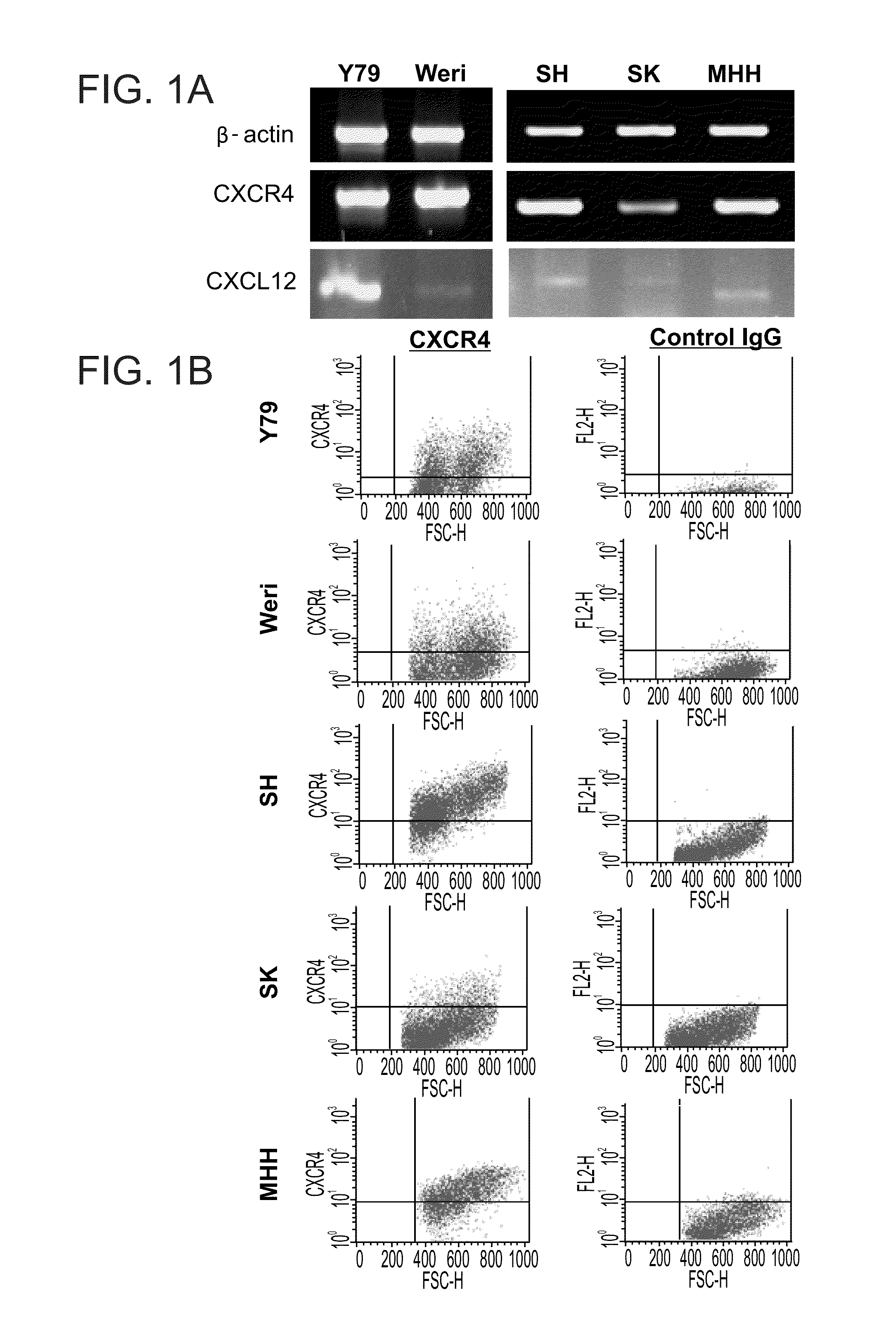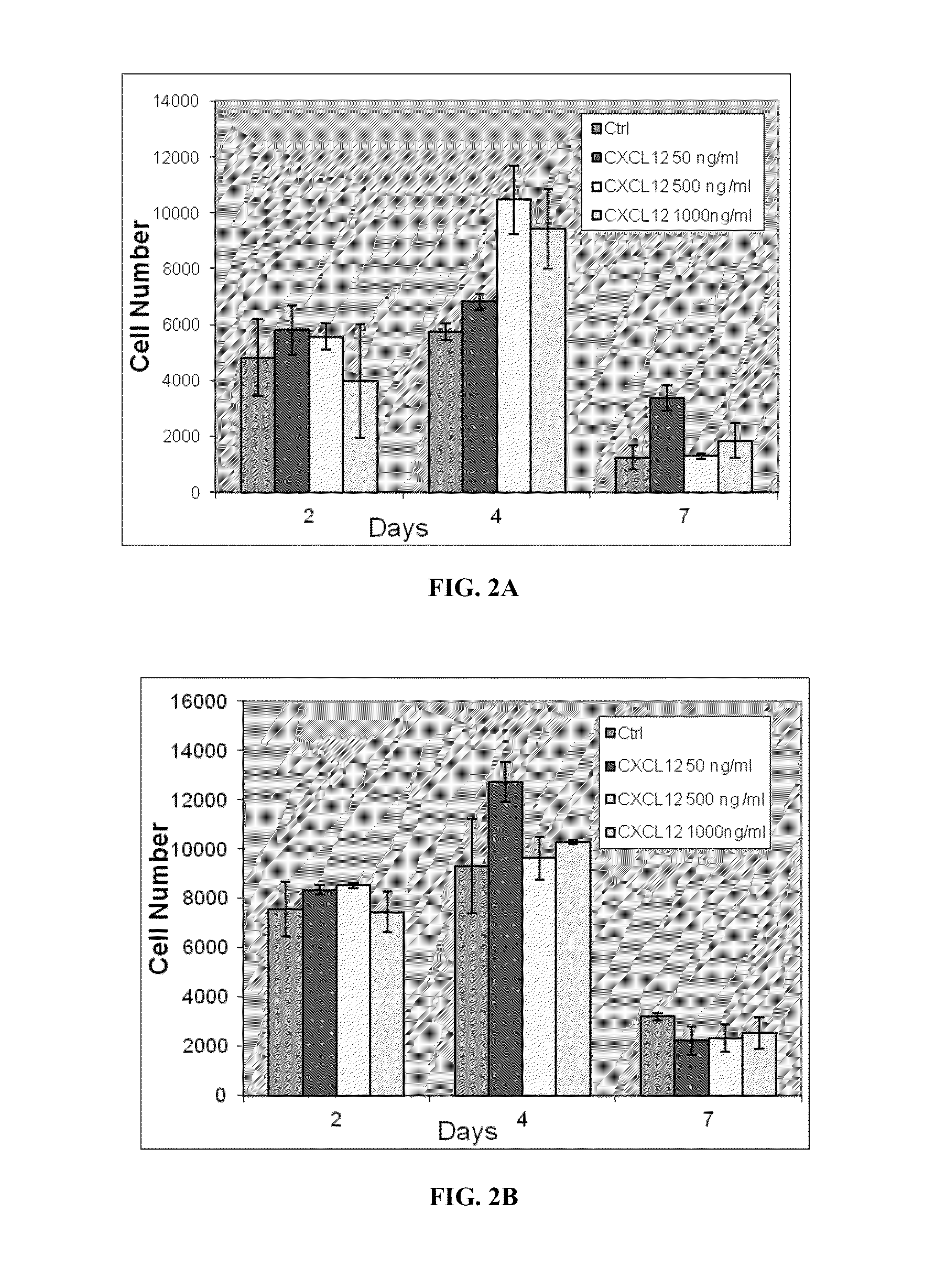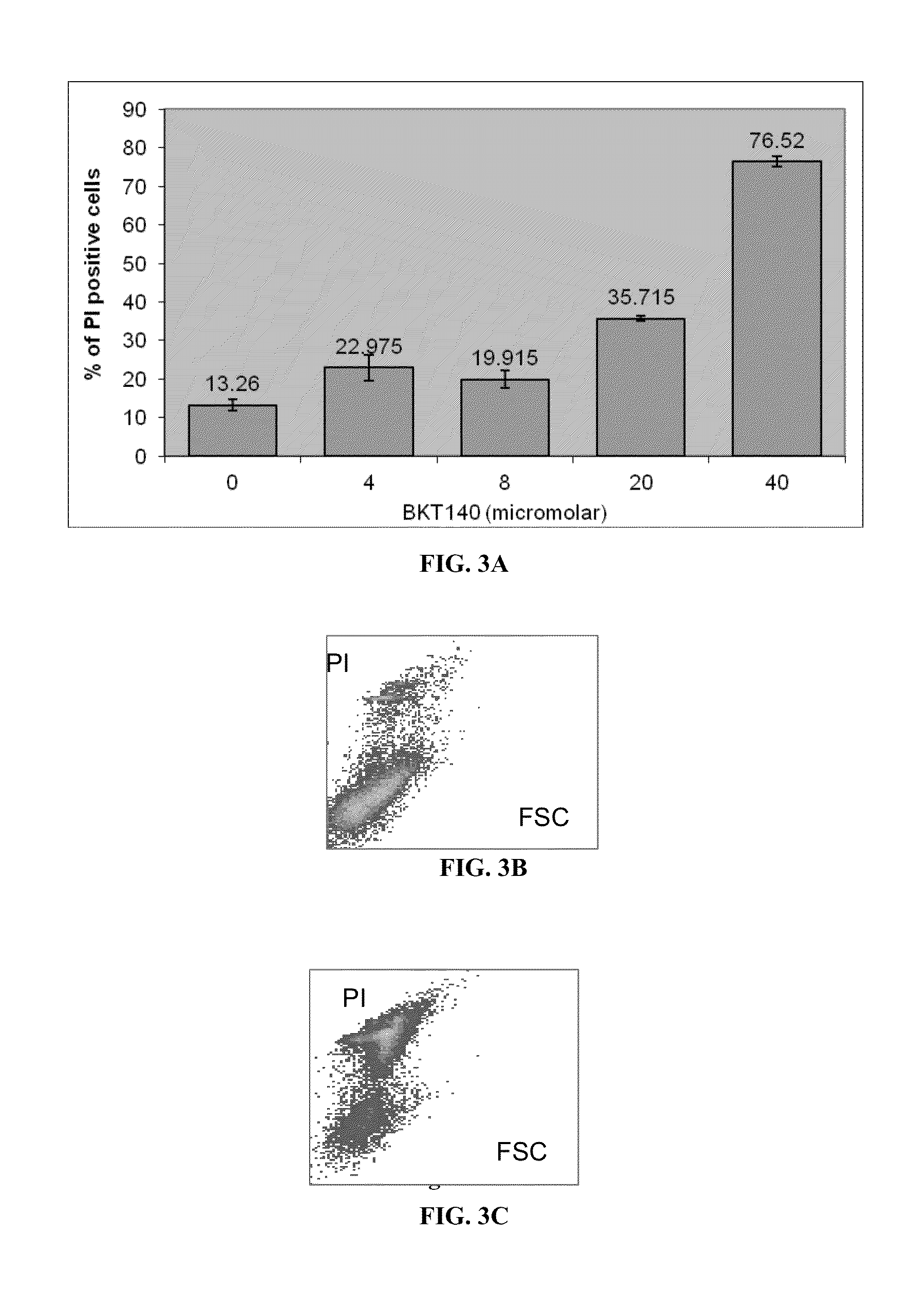Peptides and compositions for the treatment of neuroectodermal derived tumors and retinoblastoma
a technology of neuroectodermal derived tumors and compositions, applied in the direction of peptide/protein ingredients, antineoplastic agents, pharmaceutical active ingredients, etc., can solve the problems of no salvage treatment regimen known to be curative, poor prognosis of stage 4 patients, and dichotomization of therapeutic strategies, so as to improve the anti-tumor effect and inhibit the growth of tumors
- Summary
- Abstract
- Description
- Claims
- Application Information
AI Technical Summary
Benefits of technology
Problems solved by technology
Method used
Image
Examples
example 1
Expression of CXCR4 / CXCL12 Axis in Retinoblastoma and Retinoblastoma Tumors Cell Lines
[0179]Total RNA was extracted from various cell lines (Y79, Weri-Rb1, SH-SY5Y, SK-N-BE and MHH-NB-11) using TRIzol reagent (Invitrogen Life Technologies) according to the protocol recommended by manufacture. For cDNA synthesis, 2.5 microgram of total RNA were reverse-transcribed in a final reaction volume of 25 μL containing 1×M-MLV RT buffer, 2.5 μmol / L random hexamers, 0.5 mmol / L each dNTP, 3 mmol / L MgCl2, 0.4 U / μL RNase inhibitor, and 100 U / μL M-MLV RT. All reverse-transcription (RT) reagents were purchased from Promega, Madison, Wis. The reaction conditions were 1 min at 90° C., 1.5 hour at 42° C., and 15 min at 75° C.
[0180]Two microliters of the reverse-transcribed product were subjected to PCR amplification in a final reaction volume of 20 μL containing 1 U of Supertherm Taq polymerase (JMR-Holdings, London, England). Amplification conditions were denaturation at 94° C. for 30 seconds, anneal...
example 2
Effect of CXCL12 on the Survival of Retinoblastoma Cells
[0186]Retinoblastoma cells were seeded at 2×104 cells / 1 ml per well into a 24-well plate in medium supplemented with 1% FCS with or without various concentrations of CXCL12 (PeproTech EC, London, UK). The cells were incubated for seven days. On day 2, 4 and 7 the attached cells were harvested, stained with PI (Sigma, St. Louis, Mo.), and the number of viable cells was determined using FACS analysis.
[0187]FIG. 2 shows the effect of CXCL12 (50 ng / ml; 500 ng / ml; 1000 ng / ml) on the survival of retinoblastoma cells.
example 3
Effect of the CXCR4 Antagonist 4F-Benzoyl-TN14003 on the Survival of Y79 Retinoblastoma Cells
[0188]4F-benzoyl-TN14003 (designated BKT140) effect on Y79 Retinoblastoma cells survival. FIG. 3A demonstrates 4F-benzoyl-TN14003 effect at different concentrations (4, 8, 20 and 40 micromolar, 24 hr) on the survival of Y79 cells. FIG. 3B and FIG. 3C demonstrate FACS analysis using PI staining (before treatment and 24 hr following treatment, respectively).
[0189]Example 3 shows the effect of CXCR4 antagonist, 4F-benzoyl-TN14003 to stimulate cell death of retinoblastoma cells.
PUM
| Property | Measurement | Unit |
|---|---|---|
| Fraction | aaaaa | aaaaa |
| Time | aaaaa | aaaaa |
| Composition | aaaaa | aaaaa |
Abstract
Description
Claims
Application Information
 Login to View More
Login to View More - R&D
- Intellectual Property
- Life Sciences
- Materials
- Tech Scout
- Unparalleled Data Quality
- Higher Quality Content
- 60% Fewer Hallucinations
Browse by: Latest US Patents, China's latest patents, Technical Efficacy Thesaurus, Application Domain, Technology Topic, Popular Technical Reports.
© 2025 PatSnap. All rights reserved.Legal|Privacy policy|Modern Slavery Act Transparency Statement|Sitemap|About US| Contact US: help@patsnap.com



